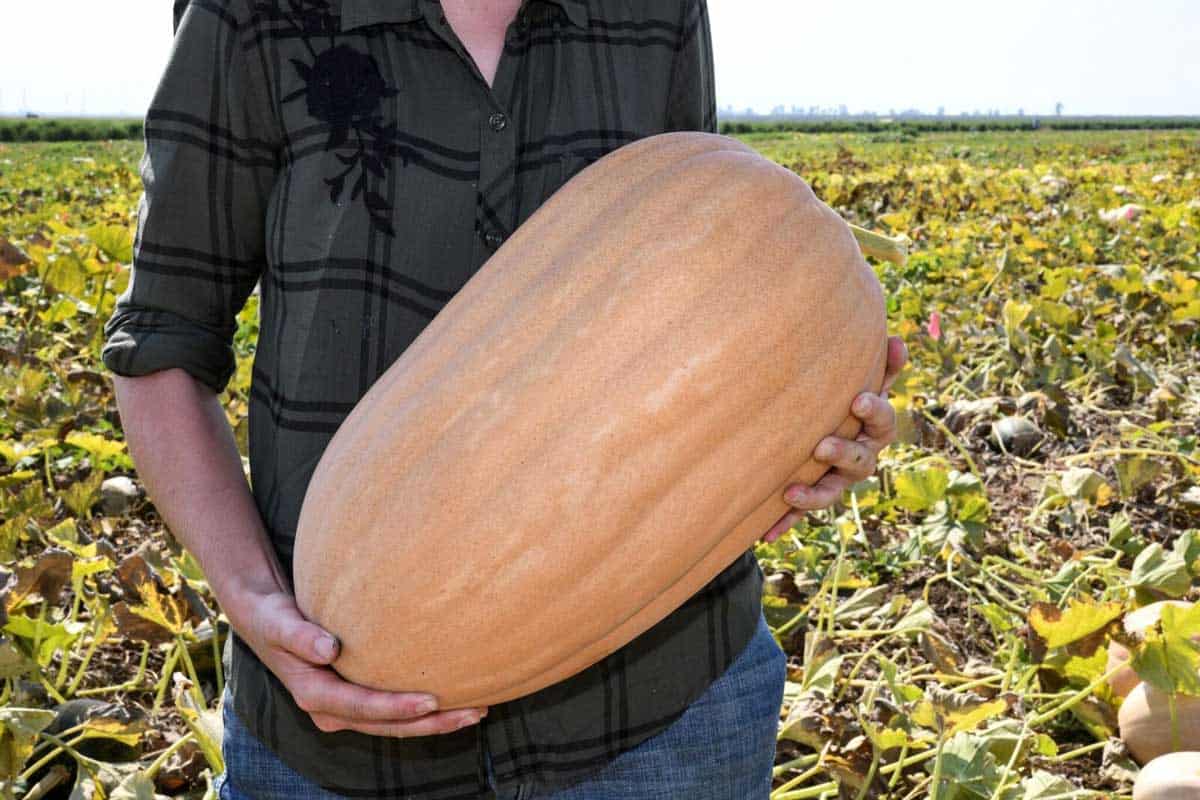
Ever wondered what makes the Dickinson Pumpkin so special? This unique variety isn't just any ordinary pumpkin. Known for its sweet, rich flavor and smooth texture, it's a favorite among bakers and chefs. But what sets it apart? For starters, it's the go-to pumpkin for making canned pumpkin puree, the kind you find in your favorite pies and desserts. Its thick flesh and minimal stringiness make it perfect for cooking. Curious about its origins? The Dickinson Pumpkin hails from Kentucky, where it was first cultivated in the early 19th century. Want to know more? Stick around as we uncover 20 fascinating facts about this culinary gem.
Key Takeaways:
- Dickinson pumpkins are a special variety known for their sweet, dense flesh, perfect for pies and soups. They are rich in vitamins, fiber, and antioxidants, making them a nutritious addition to any diet.
- Libby's canned pumpkin products are made exclusively from Dickinson pumpkins. These pumpkins have a historical significance and were grown in victory gardens during World War II to combat food shortages.
What is a Dickinson Pumpkin?
Dickinson pumpkins are a special variety often used in canned pumpkin products. Known for their sweet, dense flesh, they are a favorite among bakers and chefs. Let's dive into some fascinating facts about this unique pumpkin.
-
Origin: Dickinson pumpkins originated in the United States, specifically in Kentucky. They were first cultivated by Elijah Dickinson in the early 19th century.
-
Appearance: These pumpkins are usually tan or beige, unlike the typical bright orange pumpkins seen during Halloween. Their shape is more oblong than round.
-
Size: They can grow quite large, often weighing between 10 to 20 pounds. Some even reach up to 40 pounds!
-
Flesh: The flesh of a Dickinson pumpkin is thick, sweet, and less stringy compared to other varieties. This makes it perfect for purees and pies.
Culinary Uses of Dickinson Pumpkins
Dickinson pumpkins are a staple in many kitchens, especially during the fall. Their unique properties make them ideal for various recipes.
-
Pumpkin Pie: Most canned pumpkin used in pumpkin pies is made from Dickinson pumpkins. Their sweet, dense flesh provides the perfect texture and flavor.
-
Soups: The rich, creamy flesh of these pumpkins makes them an excellent base for hearty soups.
-
Baking: Besides pies, Dickinson pumpkins are used in muffins, breads, and cakes. Their natural sweetness reduces the need for added sugar.
-
Savory Dishes: They can also be roasted or used in savory dishes like risottos and stews.
Growing Dickinson Pumpkins
Growing Dickinson pumpkins requires some knowledge and care. Here are some interesting facts about their cultivation.
-
Climate: They thrive in warm climates and need plenty of sunlight. Ideal growing temperatures range from 70 to 85 degrees Fahrenheit.
-
Soil: These pumpkins prefer well-drained, fertile soil with a pH between 6.0 and 6.8. Adding compost can improve soil quality.
-
Planting: Seeds should be planted after the last frost, about 1 inch deep and 3 to 4 feet apart. They need space to spread out.
-
Watering: Consistent watering is crucial, especially during flowering and fruiting stages. However, overwatering can lead to root rot.
-
Pests: Common pests include squash bugs and vine borers. Regular monitoring and organic pesticides can help manage these issues.
Nutritional Benefits of Dickinson Pumpkins
Dickinson pumpkins are not just delicious; they are also packed with nutrients. Here are some health benefits you might not know.
-
Vitamins: They are rich in vitamins A and C, which are essential for immune function and skin health.
-
Fiber: High in dietary fiber, Dickinson pumpkins aid in digestion and help maintain a healthy weight.
-
Antioxidants: These pumpkins contain antioxidants like beta-carotene, which can reduce the risk of chronic diseases.
-
Low-Calorie: Despite their sweet taste, they are low in calories, making them a great addition to a balanced diet.
Fun Facts About Dickinson Pumpkins
Here are some quirky and fun facts about Dickinson pumpkins that you might find interesting.
-
Libby's: The famous canned pumpkin brand Libby's uses Dickinson pumpkins exclusively for their products.
-
Historical Significance: During World War II, Dickinson pumpkins were grown in victory gardens to help with food shortages.
-
Pollination: Bees play a crucial role in pollinating these pumpkins. Without bees, the fruit would not develop properly.
Final Thoughts on Dickinson Pumpkins
Dickinson pumpkins aren't just for pies. These pumpkins have a rich history and unique characteristics that set them apart. Known for their sweet, dense flesh, they make the perfect ingredient for various dishes. Their smooth texture and vibrant color add a special touch to any recipe.
Growing these pumpkins can be rewarding, offering a bountiful harvest with proper care. They thrive in warm climates and need plenty of sunlight and water. Whether you're a gardener or a cook, Dickinson pumpkins provide a delightful experience from planting to eating.
So next time you're at the market or planning your garden, consider adding Dickinson pumpkins to your list. They're versatile, delicious, and a true gem in the pumpkin world. Enjoy the journey of discovering all the wonderful ways to use this fantastic fruit!
Frequently Asked Questions
Was this page helpful?
Our commitment to delivering trustworthy and engaging content is at the heart of what we do. Each fact on our site is contributed by real users like you, bringing a wealth of diverse insights and information. To ensure the highest standards of accuracy and reliability, our dedicated editors meticulously review each submission. This process guarantees that the facts we share are not only fascinating but also credible. Trust in our commitment to quality and authenticity as you explore and learn with us.


